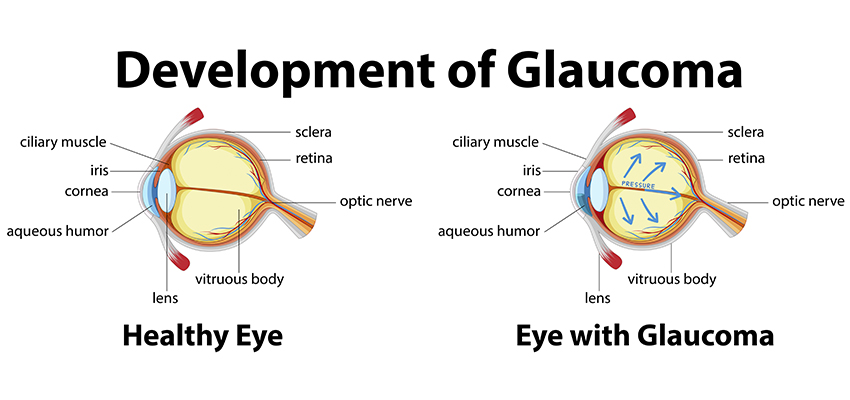
(305) 442-0066
Hialeah Office
North Miami Office

Glaucoma is a common condition affecting nearly three percent of the general population. There are many different subtypes of glaucoma, but they all have two common features: 1) Damage to the optic nerve in the back of the eye and 2) loss of the visual field (peripheral vision). Central vision is usually spared until the late stages of the disease. It has generally been accepted that once the optic nerve has incurred damage that damage is irreversible. Treatment is aimed at trying to prevent further optic nerve damage and further vision loss.
There are many risk factors for glaucoma, however the only risk factor that we are currently able to treat is high intraocular pressure (pressure inside the eye). The eye pressure is determined by the difference between rate of aqueous humor (fluid inside the eye) formation and aqueous humor drainage out of the eye.
You can think of glaucoma and intraocular pressure like a sink. In order to lower eye pressure one can either slow down the rate of water coming out of the faucet or increase the rate of water that drains from the sink. We are able to accomplish this at first with eye drops. Certain eyedrops work by decreasing the rate of aqueous humor formation while others work by opening the drainage system of the eye to allow more outflow of aqueous humor. If intraocular pressure cannot be managed with medications alone, laser or surgery may be recommended.
While treatments, both medical and surgical, have been traditionally geared towards lowering the intraocular pressure, current research is more centered on how to protect the optic nerve from further damage or even how we may be able reverse this damage in the future.

2441 SW 37th Avenue
Miami, FL 33145
(305) 442-0066

202 E 49th Street
Hialeah, FL 33013
(305) 442-0066

2050 NE 163rd Street North
Miami Beach, FL 33162
Direct Line (786) 708-8372